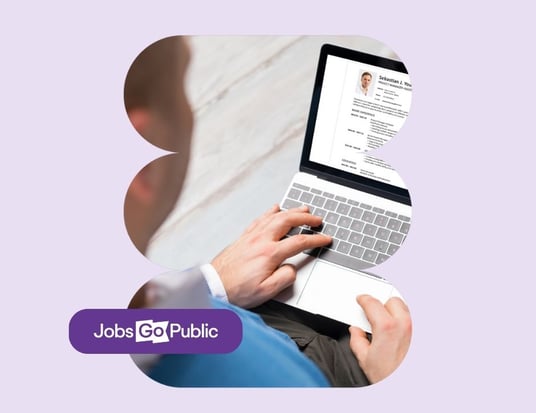Spring cleaning: 10 quick ways to update your CV
In today's fast-paced, competitive job market, updating your CV to make a great first impression is crucial. But with so much going on in our lives, it’s easy to leave a CV to gather dust until you’re in a rush to apply for a role. Whether you’re starting a new job search, or you want to be prepared for future opportunities, use our quick list below to give your CV a spring clean and stand out from the crowd. Why you should update your CV right now - Your CV is the best way to make a first impression. An employer or hiring manager will often receive your CV before getting to know you in person, so it’s the first impression that counts. - It’s essential for your personal brand. Someone looking at your CV won’t know you personally, so it’s important to convey what skills, experience and mentalities you can bring to an organisation straight away. - It can be the difference between an interview and not. You may be the perfect fit for a role, but if you don’t pay attention to smaller details such as missing keywords, you can fall short of hiring criteria. - You’ll make a good impression in a competitive jobs market. You may have come across a variety of application forms online, from quick upload CVs to manual application questions. Given the variety of today’s application forms, it’s important that your CV is optimised and ready for any vacancy that grabs your attention. 10 quick ways to update your CV: 1) Trim the length Size does matter when it comes to your CV. According to 91% of recruiters, two pages should be the maximum length for a great CV. If your CV is too long, ask yourself the following questions to trim it down: - Is everything in the CV relevant to a role? - Are you repeating yourself? - Are you straight to the point? 2) Ensure the style is consistent Have consistency with your fonts and style, making sure that the font you use is easy to read at speed. If you decide to rewrite a section or freshen up your CV with a new template, check that the spacing and fonts are still correct throughout. 3) Revise your introduction There can be a tendency to add more information to a CV introduction or profile as you develop skills and experience. However, you can run the risk of extending this opening paragraph too much, which can detract from the rest of your CV. If you’re adding more information to the top every time you revise your CV, remember that any details can be expanded upon in your cover letter. 4) Reconsider your highlights As we progress in our careers, the focus in our CVs can shift from academic achievements and those early, part-time jobs to later experience in a chosen sector. If you’re revisiting a CV, consider how much weight your education has compared to your most recent achievements and address this balance accordingly. 5) Update work experience and skills If you've gained skills and work experience relevant to your industry, add them to your skills section. Similarly, if you work in a fast-paced, tech or policy-driven sector, the tools, skills and best practices that you once used may have become outdated. For example, check that any software and systems you list in your CV are the latest versions. 6) Tailor your CV Your CV needs to be tailored to the job that you’re applying for, as one single version won’t meet the hiring requirements of every job application. The best way to tailor your CV without starting from scratch each time is to study the job advert to assess which keywords are most important. A job ad will often list essential criteria followed by desirables, so let this influence how you write your CV. We advise companies to really focus on which keywords to include in their job ads to reach the right talent, so clear keywords are a win for clients and candidates. 7) Cut out too much personal information More employers now ask for anonymous CVs to reduce the risk of unconscious bias during the hiring process. Personal details like your date of birth, where you went to university and your cultural associations are all excluded from an anonymous CV. Even if a company doesn’t ask for one directly, you can still assess whether information about your interests or hobbies is relevant and appropriate. 8) Update your references It’s usual for people to move around in the jobs market, including your references. When you’re looking to freshen up an old CV, double-check that any future employer can contact a reference with the right contact information, as they may have moved on with a new position, company email and phone number. 9) Switch to active, action-orientated language Take this opportunity to revise the language that you use to highlight your key achievements. Switching to active, action-orientated language is powerful for demonstrating results at work. Work-related action verbs include achieve, collaborate, create, drive, lead, manage and solve. Here are three examples of action language in practice: i) I led a team of five developers to successfully launch a new product, resulting in a 20% increase in revenue within the first quarter. ii) I managed a marketing campaign from start to finish, executing multiple strategies and achieving a 15% increase in website traffic. iii) I collaborated with cross-functional teams to streamline internal operations, reducing costs by 10% and improving efficiency. 10) Proofread your CV Whether you give your CV a complete overhaul or you’re returning to an old CV with a fresh pair of eyes, it’s always good practice to proofread your CV before hitting apply. Hopefully, you won’t discover any small mistakes that have been hiding in your CV for a while. But if you do, it’s better to make any corrections sooner rather than later. Now that your CV is up to scratch… It’s time to join our community! Jobs Go Public works with some of the biggest public sector employers across the UK to post the latest opportunities from a variety of sectors.

/IMG_9126_web_ready-1.jpg)









